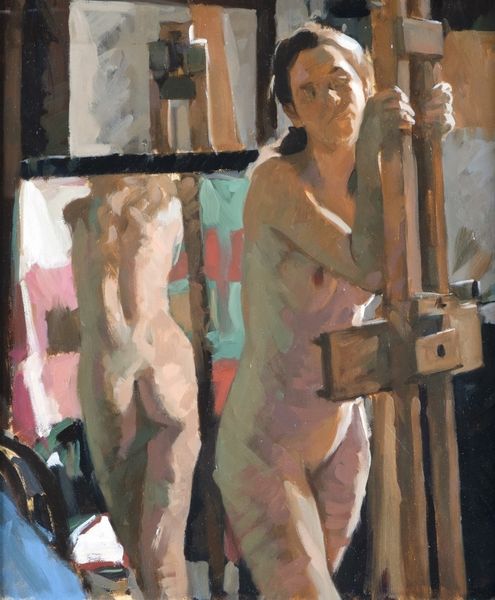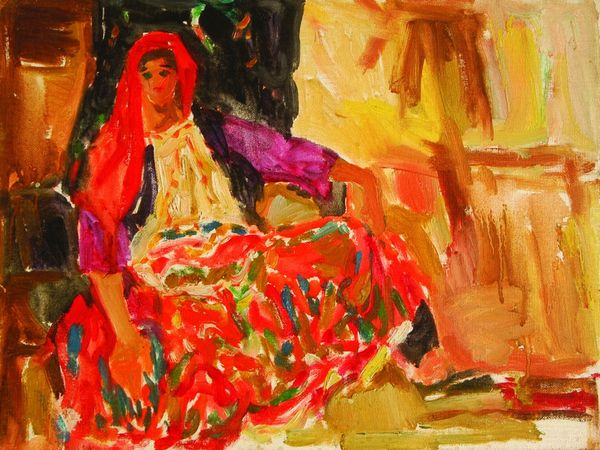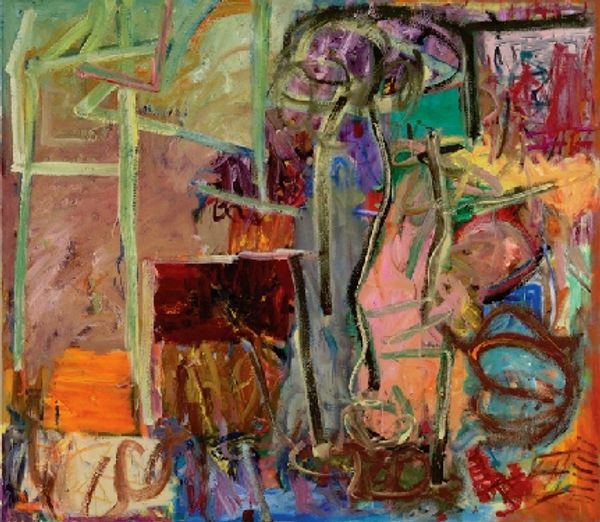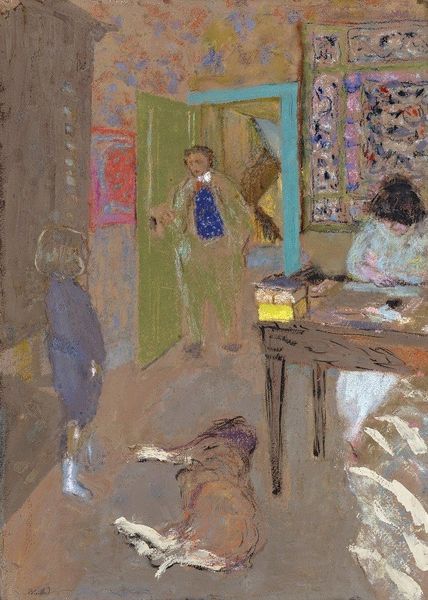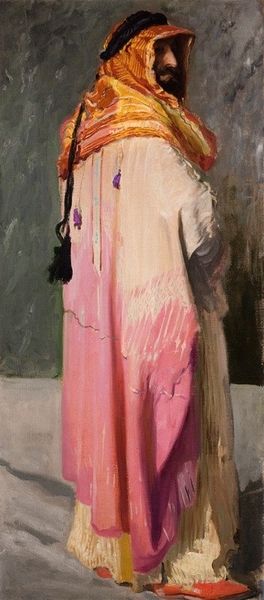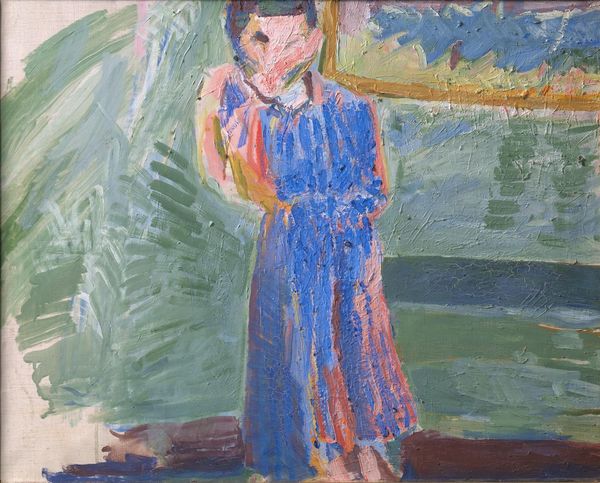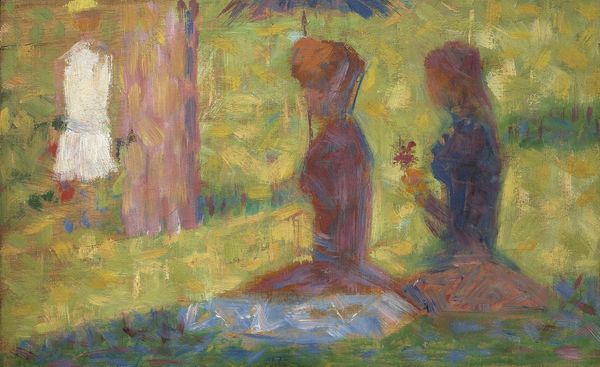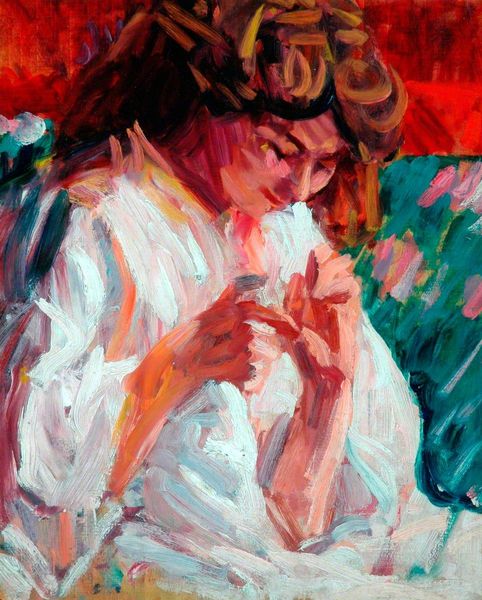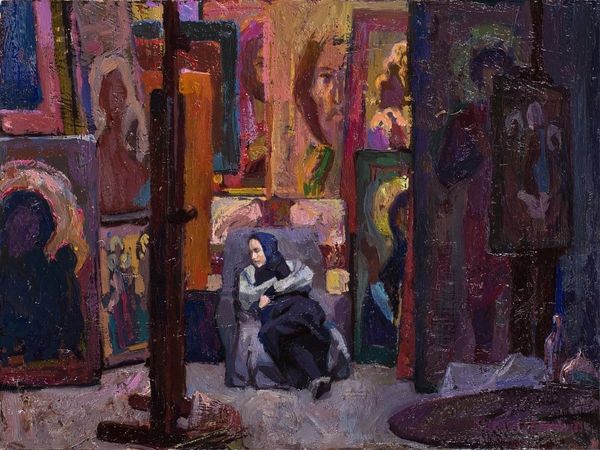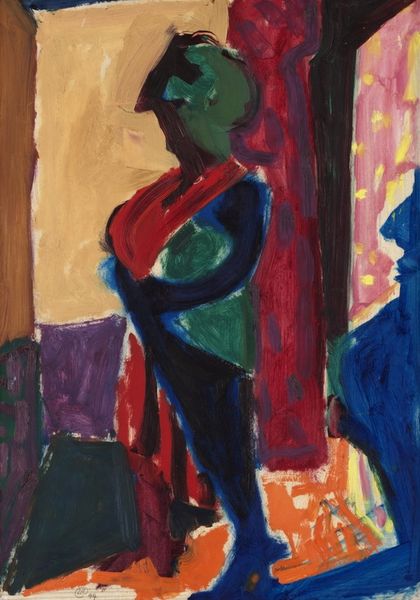
#
figurative
#
abstract painting
#
canvas painting
#
painted
#
oil painting
#
neo expressionist
#
acrylic on canvas
#
street graffiti
#
painting painterly
#
painting art
#
expressionist
Copyright: Modern Artists: Artvee
Curator: I’m immediately struck by the bold strokes and intense colours – that almost violent red of the draped cloth juxtaposed with the muted green of the figure's shirt. It feels incredibly raw, almost confrontational. Editor: It certainly has presence. This work is titled "Accidental Moment" and comes to us from the contemporary artist Timur Akhriev. Curator: Accidental feels like a loaded word here. It looks deliberately chaotic, as if the artist is trying to capture a fleeting feeling. The subject almost fades into the background, framed by very active planes of color and form. That vivid red cloth—is it symbolic, almost like stage curtain? It pulls all of our attention, almost forcing us to engage with the work on a visceral level. Editor: You’ve honed in on what interests me: What happens when the personal or internal – an ‘accidental’ emotion – gets thrust onto the stage of public consumption. I want to learn about the socio-political landscape where Akhriev conceived of this aesthetic. There’s almost a deliberate tension being constructed through the staging and framing, as you say. The rough textures and seemingly unfinished composition almost defy formal elegance. Curator: Right – its almost an iconoclasm of the traditionally beautiful. Akhriev seems much more concerned with immediate impact and how color activates emotional registers in the viewer. I am seeing many psychological metaphors in its overall appearance, an emotional interior opened up, a gesture towards the fleeting ephemerality of experience made concrete and presented to our eye. Editor: That reading of it reminds me of how art historians initially grappled with abstract expressionism, it pushes against that whole paradigm by putting a somewhat mundane figural presence, it gives a whole different resonance to the entire canvas, making it feel almost theatrical, a staging as you pointed out earlier. And, thinking more broadly, this begs the question: how can contemporary painting be both raw and considered at the same time, especially in how images operate on us within broader social systems? Curator: I'm really intrigued how art practices have embraced and now subverted our symbolic visual lexicons into this brave new arena, very little is an 'accident'. I walk away wanting to better understanding of visual memory. Editor: It’s pushed me to examine how art’s political significance manifests through deliberate manipulations of visual language. Thanks for this viewing!
Comments
No comments
Be the first to comment and join the conversation on the ultimate creative platform.

